Caldo de bolas de verde or green plantain dumpling soup
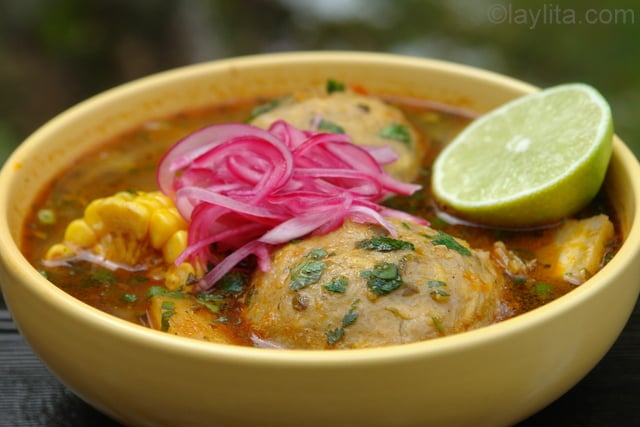
Caldo de bolas or sopa de bolas de verde is a typical soup from the Coastal region in Ecuador; it consists of dumplings or balls made from green plantains and stuffed with meat and vegetables served in a beef broth with corn and yuca. The meat for the dumpling filling is boiled with some beef bones, the green plantains and other vegetables in the broth that will be used for the soup.

Ecuadorian green plantain dumpling soup - Caldo de bolas de verde
Ingredients
For the beef broth:
- 2 tbs oil or butter
- 1 white onion diced
- 6 garlic cloves crushed
- 3 tomatoes diced
- 1 green bell pepper diced
- 2 tsp cumin
- 1 tsp achiote
- 2 tbs finely chopped cilantro
- ½ tbs dried oregano
- 2 tsp chili or hot pepper powder
- 10 cups water/broth
- 1 ½ lb beef bones
- 1 lb beef stew style, cut in pieces
- 4 green plantains peeled and cut in half
- 2 carrots peeled
- 1 large fresh yuca peeled and cut in large chunks – or 20 oz frozen yuca
- 3 fresh ears of corn cut in half
- 4 cabbage leaves cut in large pieces– optional
For the beef filling:
- 2 tbs butter or oil
- ½ red onion finely diced
- 1 to mato peeled and diced
- 2 garlic cloves crushed
- ½ bell pepper diced
- 1 tsp cumin
- 1 tsp achiote
- 2 tbs peanut butter or ½ cup raw peanuts toasted and blended with ¼ cup of broth
- 4 tbs broth
- ½ cup cooked peas
- 2 tbs finely chopped cilantro
- ½ cup of raisins – optional
- 2 hard-boiled eggs diced – optional
- Salt and pepper to taste
For the green plantain balls or dumplings:
- 4 green plantains raw, peeled and finely grated
- 2 eggs
- Salt and pepper to taste
To serve:
- Finely chopped cilantro or parsley
- Llime slices
- Red pickled onions or cebollas encurtidas
- Aji hot sauce
Instructions
For the beef broth:
- Heat the oil or butter over medium heat in a large pot, make a refrito or base for the broth by adding the diced onions, garlic, tomatoes, bell pepper, cumin, achiote, cilantro, oregano, salt and pepper.
- Add the 10 cups of water/broth, the beef bones, the meat chunks, and plantains pieces.
- Bring to a boil, reduce temperature and simmer for about 30 minutes.
- Add the yuca pieces and continue simmering for another 30 minutes or until the meat is tender
- Add the carrots, corn and cabbage, cook for another 15 minutes or until all the ingredients are fully cooked.
- Remove from the heat and let cool until safe to handle, then remove the bones from the broth and discard them.
- Remove the meat, carrots, corn and yucas from the broth, leave the plantains in the broth until ready to use them – keeping them in the broth will prevent them from drying out and make it easier to mash them.
- Remove the meat and chop it into very small pieces.
- Cut the cooked carrots into small pieces.
- Remove the strings from the yuca and cut them into small bite size pieces.
- Chop the cooked cabbage and cut the corn in smaller slices; reserve the corn, yuca and cabbage for later.
For the beef filling:
- To make the meat filling for the green banana balls or dumplings make a refrito or base by heating the butter or oil over medium heat, add the onions, tomatoes, garlic, peppers, cumin, achiote and salt.
- Add the chopped meat, carrots, peas and cilantro.
- Mix in the peanut butter and 4 tbs of the broth, as well as the raisins and hard boiled eggs if using, mix all the ingredients well and save the filling until needed.
For the plantain dumplings:
- Meanwhile remove the plantains from the broth and mix them in the food processor until a sticky dough is obtained.
- Mix the cooked plantain dough with the grated raw plantains, the eggs and some salt and pepper, you can either mix these by hand or in the food processor.
- Using your hands, try to keep them wet or lightly greased, form the plantain dough into medium to large sized balls, stuff each one with a generous spoonful or two of the meat filling.
For the final soup preparation:
- Strain the broth and return to the heat until it boils, reduce to a simmer and add the dumplings, cook over low heat for about 10-15 minutes, be very careful not to stir the soup to avoid breaking the dumplings.
- Using a ladle remove the dumplings from the soup and place them on a plate.
- Add the chopped yuca, chopped cabbage, corn slices and any leftover filling back to the broth, cook until all the ingredients are re-warmed.
- Add the finely chopped cilantro to the broth.
- Place a green plantain dumpling or two in each bowl; add a ladleful of broth with yuca, cabbage and corn.
- Serve with lime slices, aji and pickled onions.
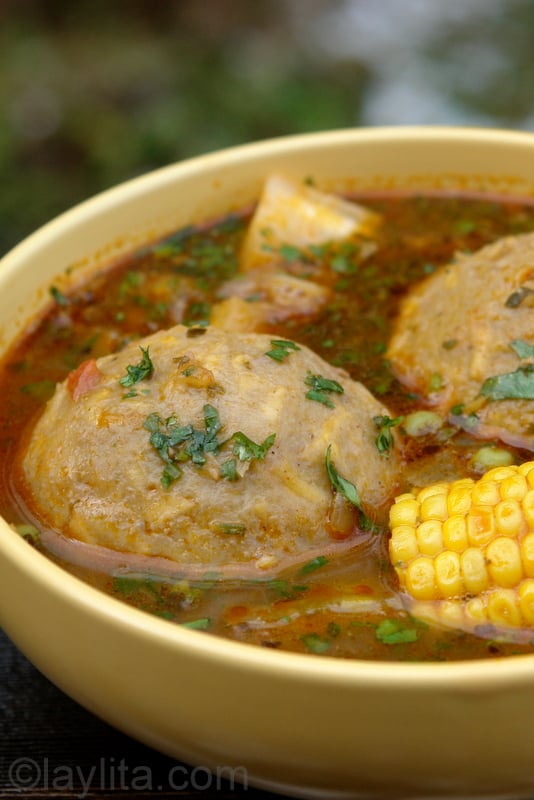
I had this soup for the first in Guayaquil, I was still in high school but was spending a few weeks in Guayaquil with a friend to work at the Feria de Duran (a huge international fair), we had an interview at a cosmetics company and after the interview (and confirming that we got the job) the owners of the company took us to have lunch, on the way to the restaurant they couldn’t stop talking about how great the caldo de bolas was at this place so of course everyone had it, and it was so good, the green plantain dumpling and the filling were so tasty and the broth was also full of so much flavor.
You know how sometimes when you eat something new for the first time and it is so great that from then on you compare that dish to all the subsequent versions of that dish and it feels like the greatness of the original dish will never be matched? Well, that’s exactly how I felt about this soup, and all the times that I’ve tried to recreate the caldo de bolas I always try to remember the flavors of the first time I tasted it. While you can occasionally find this soup in the Highlands or Sierra region of Ecuador, the best one is the one that you will eat in Guayaquil or other cities in the Coast.
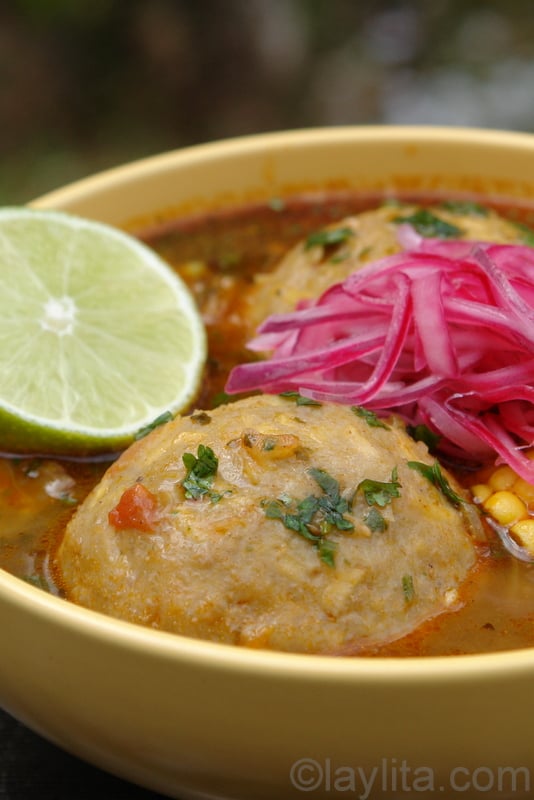
The recipe for this soup has been one of the most requested and it has taken me long time to post it, I’ve made it several times the last year, each time trying to get it closer to the way it tasted the first time I had it. Getting the flavors right has been the easier part, the hardest part was getting the green plantain balls or dumplings to stay in one piece, they are very fragile and need some care to make sure they don’t break apart while they are cooking. I started out by making the dumpling dough using a masher but the plantain dough came out very chunky so the next time I used the food processor and the result was a lot better (and faster), but even then the dumplings were still too delicate and I had a few that didn’t “survive” (i.e. they disintegrated partly into the broth), so I tried adding a couple of eggs to the dough to help keep it glued a little bit and that seemed to help a lot.
The filling for the dumplings consists of a mix of the beef and carrots cooked in the broth, as well as a refrito (or base) made with onions, garlic, pepper, tomatoes, spices, peanut butter, cilantro, raisins and hard boiled eggs. Nicolas – the husband – wasn’t too fond of the raisins and hard boiled eggs, so sometimes (if I’m being nice) I will leave those out; you can choose to add them or not based on your preference. I also tried different versions of the filling using ground roasted peanuts vs. peanut butter and I liked the peanut butter more, plus it is more convenient to use peanut butter instead of roasting and grinding the peanuts.
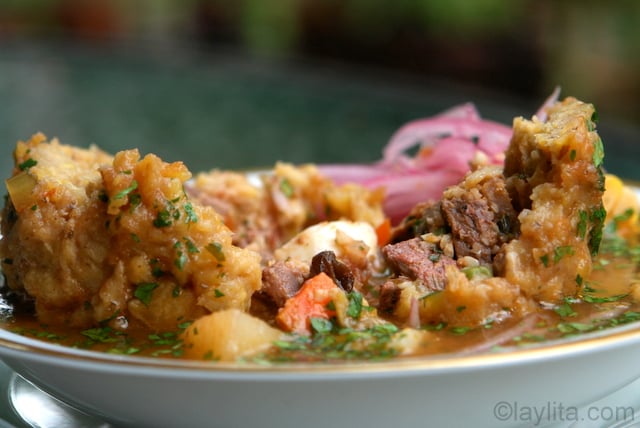
For the beef broth the first step is to make a refrito or base, I tried making the refrito two different ways, the first was to combine all the ingredients for the refrito – onion, pepper, tomato, garlic and herbs – in a blender and then mix with the spices and water/broth and bring this mix to a boil. The second method was to chop or dice all the vegetables and sauté them over medium heat with some oil or butter as well as the spices, then add the water/broth. Both methods worked well, the first is very easy and saves a lot of chopping, it also makes it easier to strain the broth once it is done; with the second method I like the flavor that the broth gets from sautéing all the ingredients together.
Another part of the broth that I experimented with was using meat with bones (such as short ribs) or using just bones plus boneless stew meat, I found that using a couple of large bones (with minimal meat on them) plus the boneless meat worked better. The bones really flavored the broth nicely and I didn’t have to deal with pulling the meat off the bones, just chopping up the chunks of meat. Finally, I also tried making the broth with just water or using a combination of water plus boxed broth (vegetable or beef) and there wasn’t a huge difference, in fact I thought that just using water when making the broth with the bones gave the broth a more natural flavor.
After the dumplings are assembled and the broth is strained you need to re-heat the broth, reduce the temperature and add the dumplings very carefully, do not stir the soup at all and keep it from boiling or the dumplings will break. The first time I made the mistake of adding the chopped yuca, corn and cabbage back to the broth and then adding the dumplings, this resulted in a few of them breaking, so it is best to have only the broth in the pot when cooking the dumplings. Then you can remove the dumplings and add the chopped ingredients (plus any leftover meat filling) to the broth, then serve the soup by putting one or two dumplings in each bowl and adding the broth with some yuca and corn.
If the soup is going to be a starter course you’ll probably want to add just one green plantain dumpling, however if the soup is the main meal you should serve two dumplings in each bowl, of course it also depends on the size of the dumplings, you can make them smaller (golf ball sized) or larger (tennis ball or softball sized) based on your preference. I serve this soup with a slice of lime, some cebollas encurtidas or red pickled onions and some hot sauce on the side.
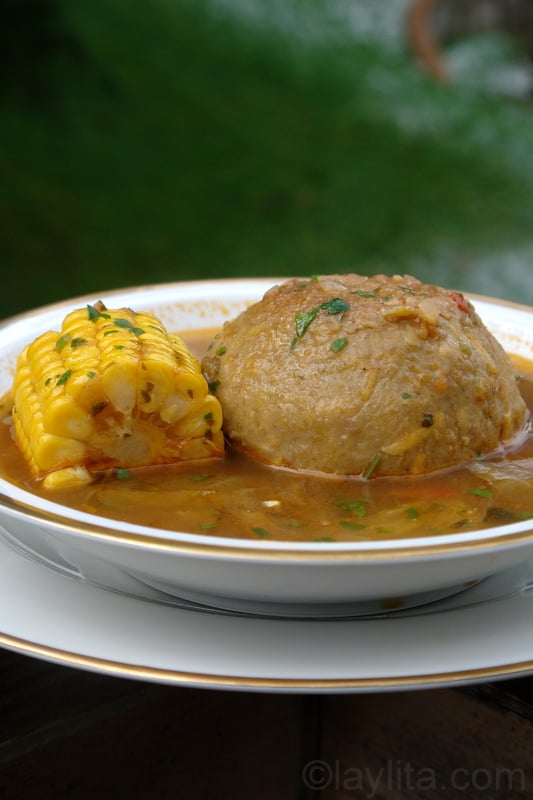
Step by step preparation photos for Ecuadorian caldo de bolas or plantain dumpling soup:
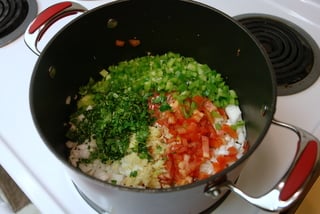
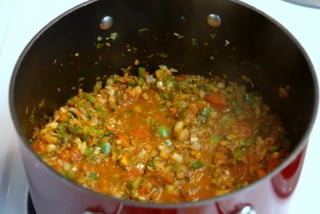
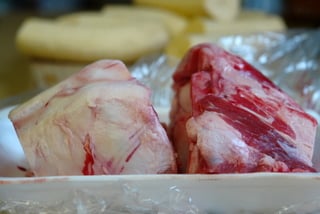
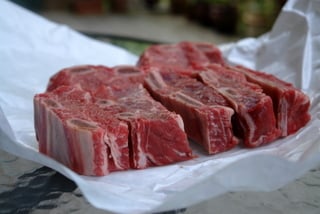
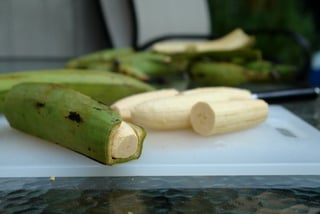
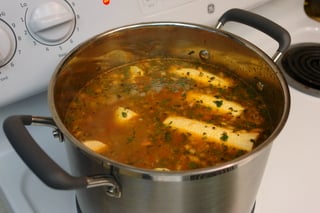
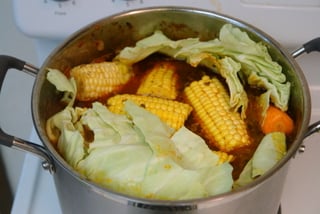
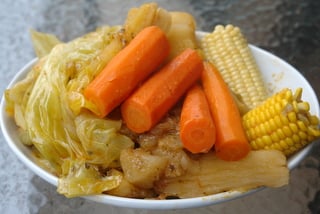
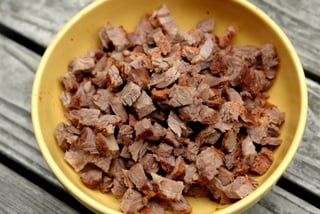
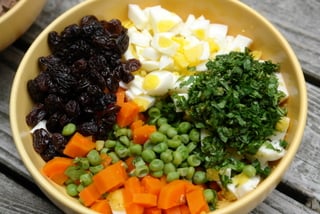
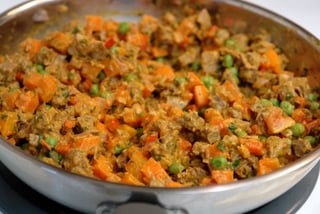
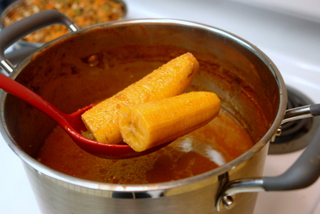
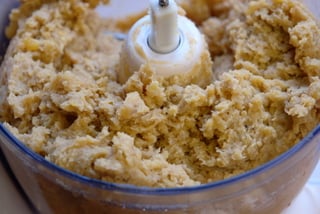
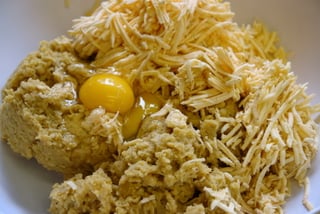
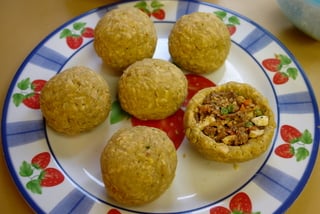
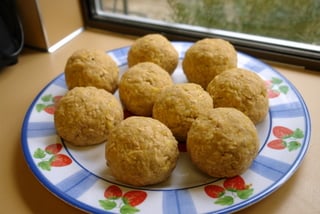
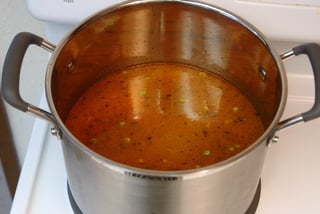
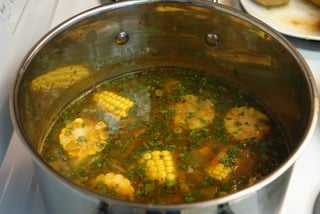
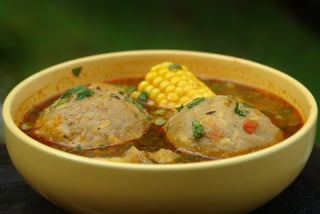
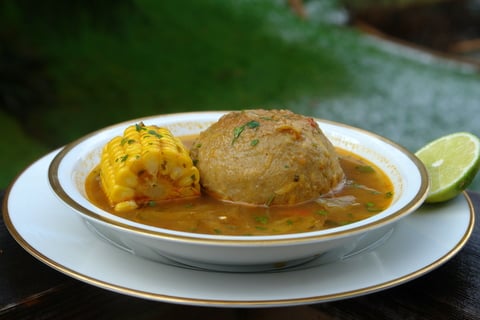
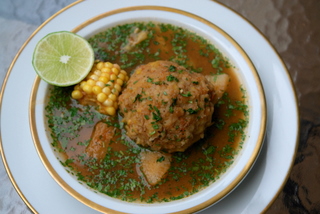
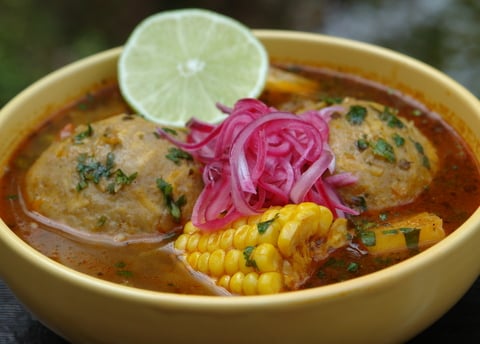
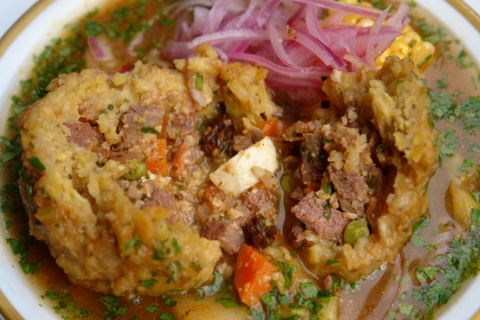
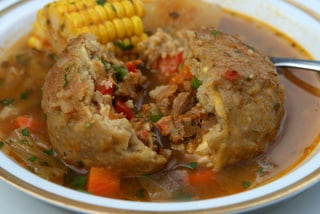
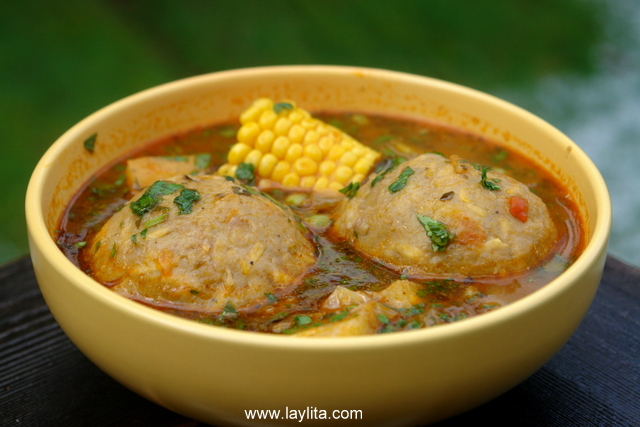
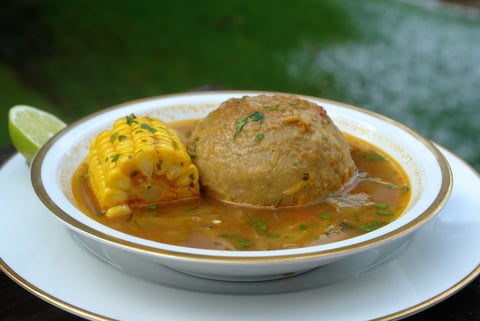
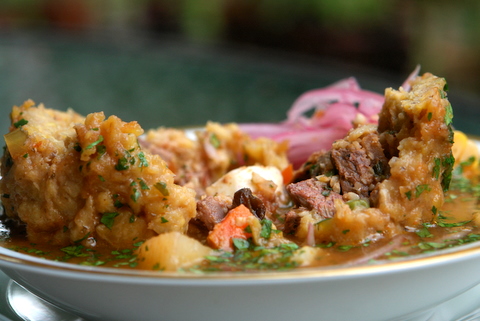
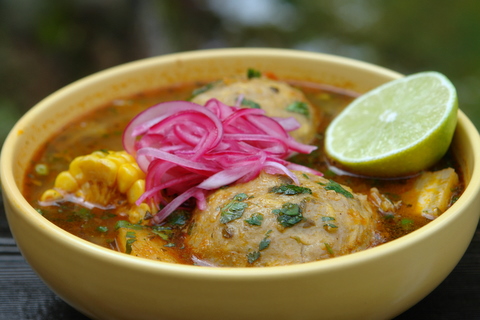
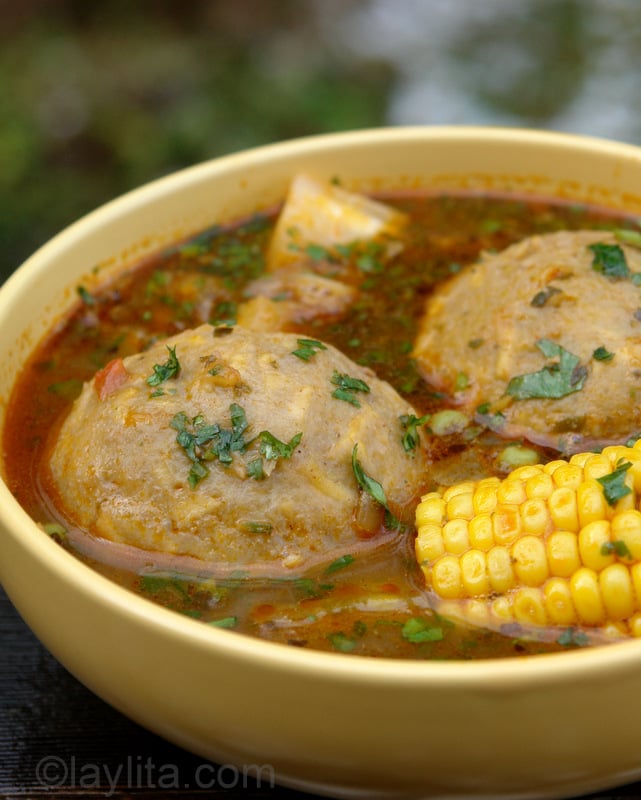
Other soups you might like:
Ecuadorian fish soup
Split pea and green banana soup
Quinoa soup with beef
Creamy potato and cheese locro

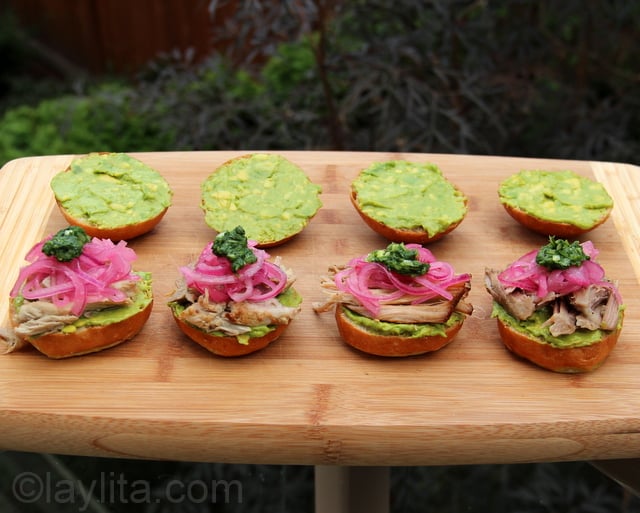
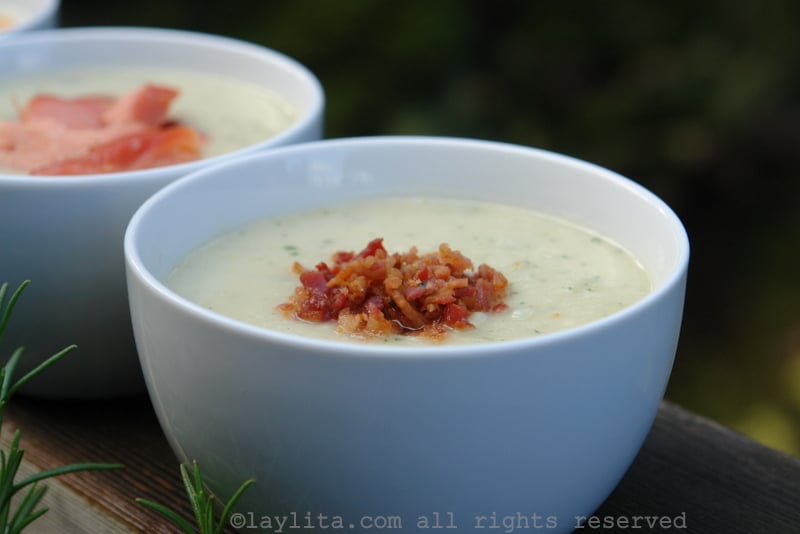

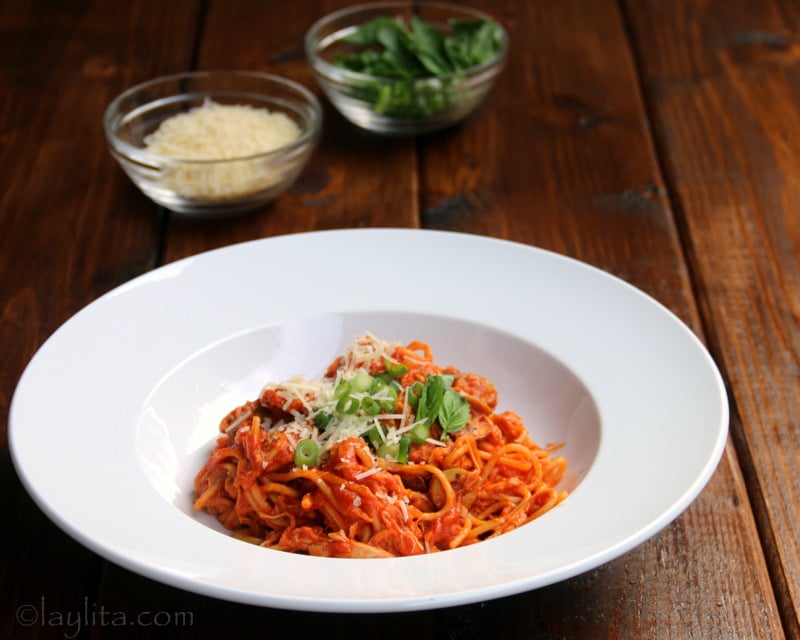
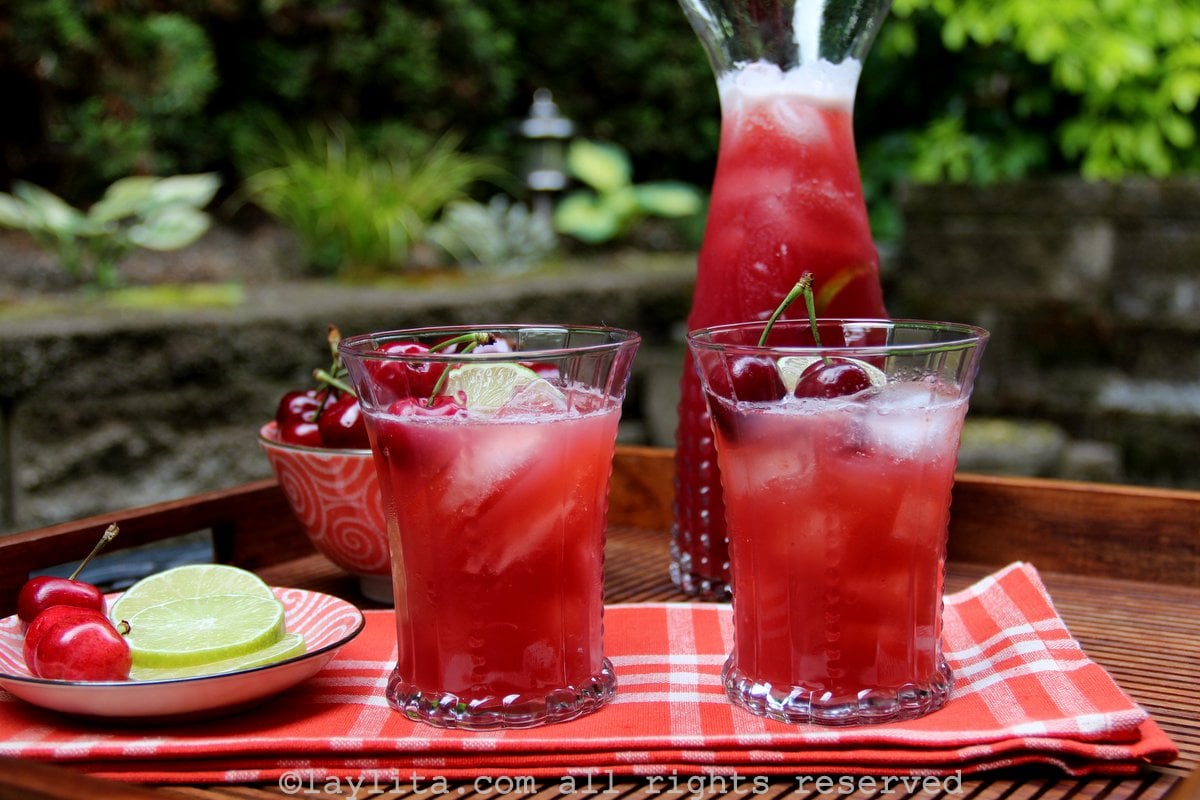
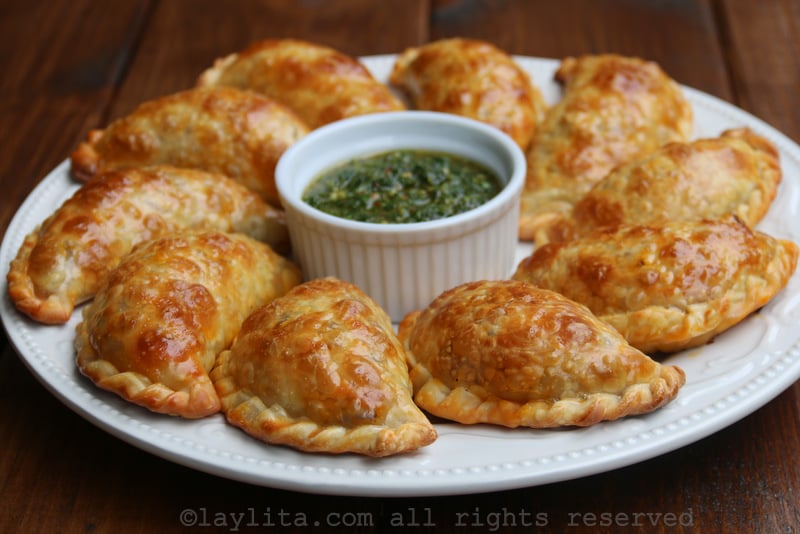
This recipe looks great and easy to follow. plus it is gluten free and no milk needed!! I love this soup, grew up with it in la Sierra. One question: can the peanuts/peanut butter be optional? I have a peanut allergy. I don’t think my mom made it with peanuts…. TIA
Hi Mariela – Yes, of course, you can adapt the recipe to your needs and your taste :)
You can try substituting the peanuts for pepa de sambo or pumpkin seeds which is what I do for my guata recipe and find it to be just as good as peanuts.
This recipe is amazing, my abuelita also made amazing caldo de bola. I made a mistake though, when I placed the bolas I did not wait for a boil first, so I decided to keep them in a little longer and majority disintegrated on me =[. The soup was still delicious though! next time I will remember my mistake lol.
This was amazing, made it today for the first time (even though we have been eating it for years). We are stuck in the U.S. for a couple of years and this is my husband’s favorite dish. It is labor intensive, but worth every second!! Only two of my bolitas exploded, and not even all the way – so it was a success! Thanks so much for your website, it is wonderful. We did llapingachos last week, with churrasco. So good. Gracias!
Looks delicious, but I can’t find everything where I live. So I think I have to order online,thanks for the recipe! ;)
Gracias Laylita you bring my Mamita home to me its truelly soul food el caldo esta hirviendo este rato Anita
My friend’s mom makes this once a year. Better than what I had in Ecuador. Yes it is that good. Before I die I will learn to make this.
Layla muchisimas gracias por compartir todas sus recetas. De casualidad encontre su blog hoy y me facina! Ahora que vivo en Singapur y no tengo acceso a restaurantes Ecuatorianos voy a poner en practica todas sus deliciosas recetas! :)